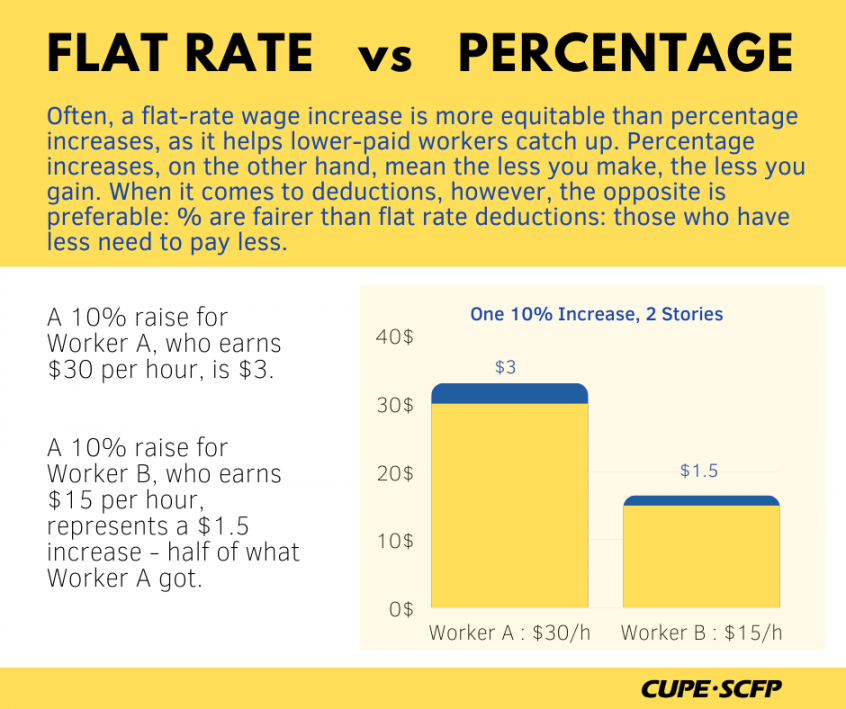Recent history of wage increases
If you’ve looked at past contracts, you might have noticed that if you’ve received general wage increases per year, they were provided in percentage increases. Governments and employers have a recent tradition of pushing wage freezes or increases in the form of percentages. They like to speak of these percentages as “mandates”, and employers want all workers to respect these wage mandates regardless of how much these workers get paid per hour.
The impact of percentage increases on CUPE workers
Employers like to negotiate percentage increases rather than flat rate increases. Wage percentage increases have the negative impact of widening wage gaps between classifications. Those with higher salaries make larger increases in real dollars compared to lower-paid workers. Over time, this compounds into unjustifiable wage gaps.EXAMPLE 1
- 1% increase at $20.00/hour = an increase of $0.20 per hour, or an extra $1.60 per day*
- 1% increase at $35.00/hour = an increase of $0.35 per hour, or an extra $2.80 per day*
*based on an 8-hour work day, not take home amount (deductions still apply)
Higher-paid civil servants like NB Deputy Ministers might think a 5% increase is a high percentage from their point of view, but it only represents $1.00/hour for someone making $20.00/hour.
EXAMPLE 2
- 1% increase at $96.15/hour ($200,000/year – Deputy Minister) = an increase of $0.96 per hour, or an extra $38.46 per week*
- 1% increase at $22.00/hour (median CUPE member rate) = an increase of $0.22 per hour, or an extra $8.80 per week *
*based on 40 hours per week, not take home amount (deductions still apply)
The advantages of flat rate increases
An important first step is to negotiate wage increases which give each worker the same dollars and cents-per-hour wage increase – also known as a flat rate wage increase. This stops the wage gap from widening between the lowest and highest paid.
EXAMPLE 3
- $1.00 increase at $20.00/hour = an increase of $1.00 per hour, or an extra $40.00 per week*
- $1.00 increase at $35.00/hour = an increase of $1.00 per hour, or an extra $40.00 per week*
*based on a 40 hours work week, not take home amount (deductions still apply)
Flat-rate wage increases maintain the differences between classifications throughout the wage grid. All wages move up by the same amount, by the same flat rate. Percentage wage increases, on the other hand, increase the top rates more than the bottom rates and has the effect of increasing the wage differential amongst classifications on the wage grid.

